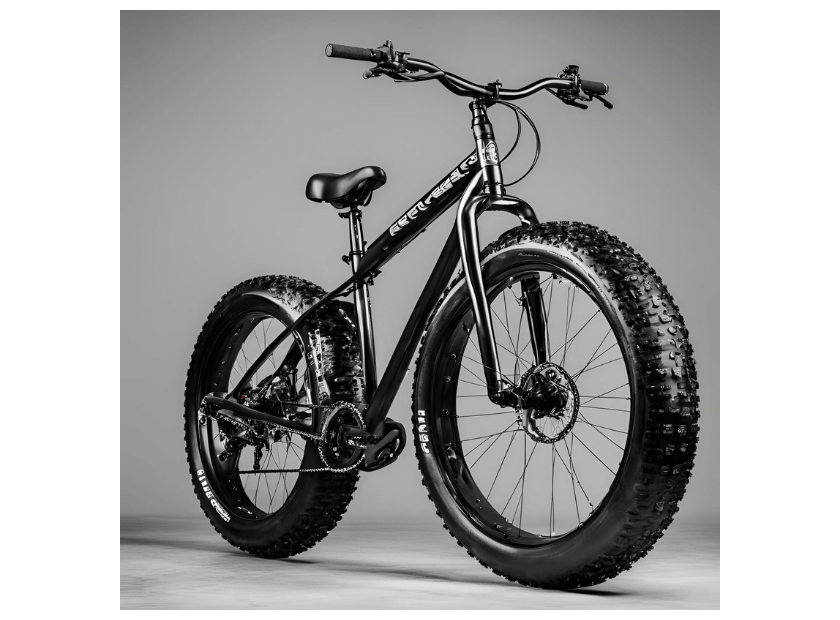Unlock the Adventures: The Unseen Advantages of Fat Tire Bikes
Over the years, there has been a surge in the popularity of fat tire bikes; this is because they are recognized for having huge tires that provide better grip as well as balance. These bicycles can be ridden on different types of surfaces, such as sandy beaches or icy roads, making them suitable for people who like exploring nature under any circumstance. What we want to talk about in this piece are various pros presented by these kinds of bicycles apart from balancing, among them being an improved level of comfort during rides and the ability to ride over more types of terrains than any other bike could ever do so. If you love cycling or are just starting out, then fat tire bikes will give you that chance for adventure, which may otherwise not come your way, ensuring safety throughout the journey while still having fun regardless of where it takes place. Come with us on this discovery journey about the benefits associated with fat tire cycles and why they should be considered part and parcel of one’s cycling equipment.
What Makes Fat Tire Bikes Unique in the Cycling World?

The Design and Appeal of Fat Tire Bikes
Fat tire bikes, with their huge tires being anywhere between 3.8 inches and over 5 inches in width, are built to be used on different types of terrain. Broader tires mean that the rider’s weight is spread out more evenly, hence reducing ground pressure, which in turn creates stability on surfaces like sand, snow, or mud. This design permits lower air pressures, resulting in bigger contact patches, thus enhancing grip as well as shock absorption for a smoother ride. Moreover, most fat tire bikes have strong frames and suspensions as well as disk brakes to cope with rough ground while ensuring reliable stopping power. The unusual appearance of these bicycles catches people’s eyes but also serves as proof that they can be ridden under extreme conditions, thus making them popular among adventure seekers and casual cyclists alike.
Comparing Fat Tires to Regular Bike Tires
When you compare tires with a lot of fat to normal bicycle tires, there are a few main things that differentiate them based on design and use.
- Width of the tire: Fat tires can be anywhere between 3.8 inches to 5 inches wide or more, while standard bike tires range from about 1.9-2.5 inches across. Because they are wider, these types of tyres distribute weight better and reduce ground pressure so they work well in various difficult terrains.
- Pressure of the tire: The minimum operating PSI for fat tyre is usually between 5-15 psi whereas regular bicycle tyre generally runs on between 30-60 pounds per square inch (PSI). A low inflation pressure improves ‘contact patch’, traction and shock absorption thus increasing comfort when riding over rough surfaces like sand, snow or mud.
- Grip and steadiness: Bigger contact with the ground ensures more stability of fat tyres thus making them suitable for riding in unstable environments while reducing chances of slipping or skidding though this does not mean that normal bike tread pattern will not perform excellently under different conditions such as wet roads because it would work fine too. Fat tire bicycles were made to be used off-road especially during bad weather.
- Weight Vs Velocity: Due to their larger size, which requires stronger frames as well as heavier treads, most fat bikes tend to sacrifice speed for stability and control, but this does not mean that you cannot ride fast on a road with them. Normal bicycles have lighter weights than fatties hence can move at higher speeds thereby making them preferable for activities like road cycling where aerodynamics matter most.
- Suspension & Handling: These types of cycles often come equipped with heavy duty suspension forks plus disc brakes systems which are designed to withstand rough terrains’ demands on durability while providing reliable stopping power under any condition besides enhancing overall handling; conversely typical models lack enough front end travel or even rear mounts especially if intended usage is off-road only.
Ultimately, it all boils down to what you plan on using your bike for. If versatility and comfort over uneven and rough surfaces are key factors in choosing a tire, then fats should be considered; however, if speed or efficiency while on paved roads is what matters most, then normals would do just fine.
Understanding the Fat Bike Tire Technology
When studying fat bike tire technology, there are important factors that contribute towards their unique performance.
Fat bike tires are specially designed for better performance on difficult terrains. Normally, their wide profile is between 3.7 inches to over 4.5 inches which is a lot larger compared to regular bicycle tires. This makes them wider than normal which means they can make more contact with the ground thus improving traction and stability on soft or loose surfaces like snow, sand or mud.
One thing I noticed about these tyres is how they can be used with low air pressures – typically ranging from 5 to 15 PSI. Riding at such a low pressure helps in absorbing shocks and increases surface contact thereby offering smoother rides over rough terrains . This feature comes in handy especially during off-road cycling where traditional tyres may fail to stick onto the ground due to lack of grip or stability .
Moreover , robustness has been enhanced in the design of fat bike tyres by using thicker rubber materials combined with stronger tread patterns which enhance durability as well as puncture resistance thus making them suitable for use under adverse conditions when other types of tires might get damaged easily.
To sum up , everything about fat bikes revolves around traction, stability and comfort while riding on tough surfaces; hence they are a must-have for any adventurous cyclist who loves exploring different types of landscapes that have unpredictable terrains.
Why Consider a Fat Tire Bike Over a Traditional Mountain or Road Bike?
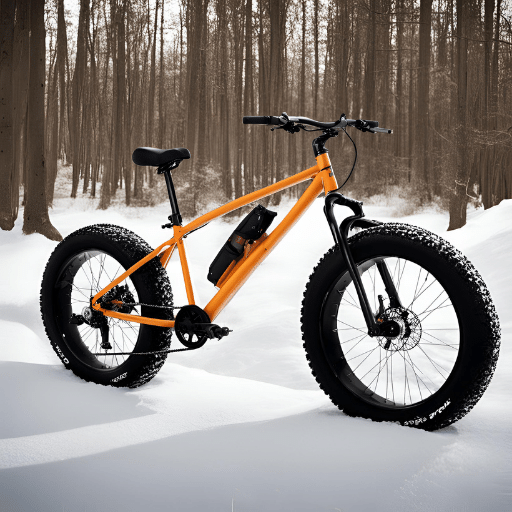
Advantages of Fat Bikes on Rough Terrains
When it comes to riding on rough terrains, fat bikes offer a number of unique advantages over traditional road or mountain bicycles:
- Better Grip – Normally ranging between 3.7 inches and more than 4.5 inches wide, fat bike tires have a greater surface area that touches the ground. Consequently, this leads to improved traction, especially on soft and loose surfaces like snow, sand, or mud.
- More Stability – These types of tires are operated at lower air pressures, which may vary from 5 to 15 PSI. Therefore, they can absorb shocks better and maintain stability over rough and uneven terrain – an important feature for off-road cycling where balance could be difficult to sustain.
- Increased Comfort – Also due to their low-pressure operation, these kinds of tires deliver smoother rides by soaking up more bumps and vibrations from the ground. Thus they reduce rider fatigue thus enabling one to comfortably cover long distances over challenging grounds.
- Strength: Fatbike tire design includes thicker rubber and stronger tread patterns built into them, therefore making them highly resistant to punctures while enhancing durability even under harsh or unpredictable conditions.
- Versatility: Whether it is on snow-covered trails or sandy beaches, fat bikes can handle any type of condition thrown at them, thus making them suitable for riders who want consistent performance across various terrains.
- Technical Specifications:
- Tire Width: 3.7 inches to over 4.5 inches
- Air Pressure Range: 5-15 PSI
- Material Used: Generally thicker rubber with reinforced sidewalls
- Pattern Type: Aggressive and varied in order to improve grip as well as durability
To sum it up, the technical construction coupled with the performance capabilities associated with these kinds of bicycles make them best suited for individuals passionate about cycling who wish to conquer challenging areas confidently and comfortably without being limited by what might happen along the way.
Comfort and Stability: Fat Tires Provide a Smoother Ride
Fats tires are very important in improving comfort and stability during rides especially on rough uneven grounds. Fat bike tires have greater width and less air pressure, which enables them to absorb more shocks and vibrations from the earth, thus providing a cushioning effect. The result is that this characteristic reduces tiredness among riders, thereby making them capable of handling long distances as well as difficult off-road paths. By having a wider contact area with the ground coupled with deep treads designed for aggressive riding patterns, these tires ensure good traction even over the toughest surfaces while keeping a better balance of the bicycle itself. Therefore, fat bikes offer shock absorption together with the decreased effort required from the body combined with increased adhesion, which enhances the overall cycling experience for all-weather use according to the various needs of riders who want reliable performance in different situations.
Fat Bikes in Snow and Sand: Conquering Unfriendly Surfaces
Demonstrating their remarkable adaptability and performance on inhospitable surfaces, riding fat bikes in snow and sand is an experience. The huge tires on fat bikes have a large contact area that distributes the rider's weight more evenly, reducing sinking into soft ground. This is especially useful in snow or sand where normal bicycle tires would not cope. Fat tire pressure being low makes them have a better grip on the ground and floatation, too; thus, they are propelled easily without much energy. Moreover, aggressive treads are built to dig into loose substrates, which provides enough traction to cross through these tough terrains. From my own observation as well as what leading authorities say about it; one can always count on their trusty friend “Fat Bike” when going over such difficult-to-deal-with areas like those covered by snow or sand because nowhere else will you find anything like this – they’re stable beyond belief!
How Do Wide Tires Affect Traction, Suspension, and Overall Ride Quality?
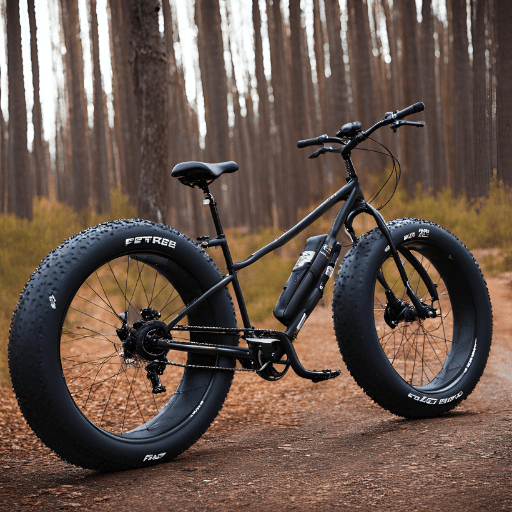
Improving Traction with a Larger Contact Surface Area
Traction is greatly improved by wide tires because of the bigger contact area with the ground. Enhanced grip on loose or wet surfaces is achieved due to this increased footprint where more rubber touches the earth. The construction of these types of tires permits running them at low air pressures that again increase their surface area in contact with the ground and hence provide more traction as well. Also, wider tires have deeper and more aggressive tread patterns, which are designed to channel away dirt while still keeping close touch with rough riding surfaces, thereby ensuring the maximum traction possible. Therefore, they offer better control over slippery conditions besides being less prone to skidding than narrow ones, especially when used in such harsh environments like snow, sand, or mud.
The Role of Tire Pressure in Fat Bikes' Suspension System
Based on what I have experienced and as the leading authorities agree, tire pressure is a key element in the suspension system of fat bikes. When the pressure of a tire is low, it can easily be deformed to overcome obstacles, thereby serving as a shock absorber and giving a smoother ride. This pliability allows for the wrapping of tires over uneven surfaces so that they absorb shocks from impacts as well as vibrations that would have been transferred to the rider otherwise. On the flip side, when you increase tire pressures, rides become harder but faster since they roll more easily on hard ground. However, this happens at the expense of comfort and control, especially when things get bumpy or loose. It is necessary to adjust inflation rates depending on where one is cycling for better grip and suspension response, which leads to a well-balanced riding experience.
Reducing Rolling Resistance for a More Comfortable Ride
To make a ride on a fat bike more comfortable and efficient, it is important to reduce rolling resistance. Rolling resistance is the force of friction that opposes the motion of a tire as it rolls over a surface. Tire composition, tread pattern and tire pressure among others contribute to rolling resistance. Ride comfort and performance can be significantly improved by adjusting these factors according to reputable sources.
- Tire Composition: Modern fat bike tyres are made with advanced rubber compounds which balance between strength and reduced rolling resistance. Quality materials lower energy losses in deformation and recovery during tyre rolling.
- Tread Pattern: In order to minimize rolling resistance, one should select treads designed for particular surfaces, such as those having smooth or closely spaced knobs for hard-packed trails where there is less need for grip but a greater desire for speed while riding on mud or snow might require more aggressive patterns still offering low resistances.
- Tire Pressure: Rolling resistance can be managed by fine-tuning pressures within recommended limits. Lower values enhance grip and suppleness because when inflated hard they do not deform easily against obstacles thus providing a better contact patch; however, this may increase their inversely proportional comfort levels since Higher ones could decrease both adhesion abilities due to decreased tire deformation while also reducing overall cornering ability through loss of lateral stability hence decreasing safety margins, especially under wet conditions where thin films form between tire surface.
- Technical Parameters:
- Tire Pressure Range: For fat bikes, a typical range is 5-15 psi. At the lower end (5-8 psi), one gets more comfort on soft surfaces like sand or snow where higher pressures would sink too deep into such grounds, thereby reducing traction while increasing rolling resistances against them but at the same time offering good support; whereas at the higher end (10-15 psi) they give less drag on hard-packed trails with loose gravels or rocks that can't hold well onto smooth surfaces due sliding effect created by high forces generated through impacts caused when riding over potholes.
- Tire Width: Wider tyres (4-5 inches) provide greater float and plushness however these would increase roll resistances slightly compared to narrower ones which strike a balance between fat bike comfort and efficiency by having 3.8 – 4.5inch widths.
- Tread Type: Large, aggressive knobs have more rolling resistance than semi-slick or small knob designs thus making them crucial for specific off-road conditions where low rolls are required but still need some grip too; otherwise, it may be impossible to ride through such terrains safely without slipping off track instantly upon encountering any obstacle along the way so people should always choose wisely when selecting their treads depending on what they plan doing most often with their bikes.
By adjusting these parameters correctly, riders can achieve both comfort and efficiency whether they ride on snowy trails or sandy beaches.
Considering the Purchase: Benefits and Potential Disadvantages of Fat Tire Bikes
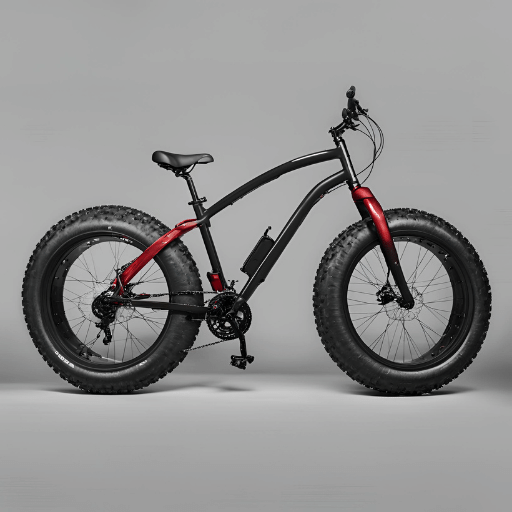
Analyzing the Cost-Benefit Ratio of Investing in a Fat Tire Bike
Choosing to invest in a fat tire bike requires careful consideration of costs and benefits. Fat tire bikes have many advantages. They can be ridden throughout the year because they are able to ride on a wide range of surfaces, such as sand, snow, or rocky trails, among others, which makes them versatile. Beginners, especially those cycling under difficult conditions, will benefit from their stability and better grip due to the broader tires used. Furthermore, it gives riders a one-of-a-kind experience as they are more comfortable while still being able to absorb shocks.
Meanwhile, there are some drawbacks associated with this type of bicycle design, such as a higher initial purchase price compared with regular mountain bikes, mainly caused by the demand for its specialized components. Additionally, generally heavier weights may decrease maneuverability while pedaling becomes harder on solid grounds, thus making them less nimble than lighter types like traditional MTBs (Mountain Bikes). The bigger size of parts involved might also contribute towards increased maintenance costs. Consequently, if most riders only ride on normal surfaces, then these merits won't justify additional spending.
To sum up this decision whether or not one should buy into having fat-tires must be made with reference towards use-specific situations together with personal preferences alongside environments where people intend riding them at. The trade-off between adaptability brought about by the wide-ranging compatibility offered by these models against extra expenses plus maintenance requirements will ultimately determine their cost-effectiveness.
Potential Drawbacks and How They Compare to Conventional Bikes
In the midst of exploring the best web-based sources, I noticed that fat-tire bikes are only criticized for being heavy and expensive. Normally, a fat tire bike is heftier than the typical bicycle; thus, it cannot be as nimble or easy to pedal on flat surfaces. The reason for this extra weight lies in larger wheels with thicker tires that can handle all kinds of terrain and a stronger frame that supports them. Furthermore, another disadvantage of these types of bicycles is their cost –– they usually come with higher upfront prices, which reflect specialized materials used during the manufacturing process.
Comparatively speaking, maintaining a fat tire bike is also more difficult and costly than doing so for an ordinary one. Owing to the bigger size, the unique suspension system needs to be checked up on often enough while still having some parts replaced frequently, therefore increasing overall ownership expenditure. On the contrary, conventional bikes are generally lighter in weight and hence more maneuverable, besides requiring less effort when it comes to keeping them in good shape, thus becoming ideal for riders who mainly cycle along paved roads or regularly maintained trails.
To sum up my findings: Although being multi-purpose and stable beyond any other model available today, these benefits do not outweigh their impracticality caused by increased massiveness combined with expenses necessary for everyday usage compared to average bikes’ convenience features such as lightness and cheaper repairs among others too numerous here mentioned suffice to say most people spend much time riding over the flat ground where even though there might arise need to go uphill occasionally but still want something cheap.
Fat Bikes Make Riding Fun Again: Looking Beyond the Disadvantages
Although there are many disadvantages of fat tire bikes, they still have some benefits that make the riding experience better. Fat bikes can make riding more fun, because:
Traction and Stability: Fat bikes have wide tires which give them a better grip on different types of terrain like snow, sand, mud or loose gravel. This increased traction means you will have a stable trip even in difficult conditions.
Technical Parameters:
- Tire width: Typically between 3.8 to 5 inches.
- Recommended tire pressure: 5-15 PSI (compared with 30-50 PSI for normal bicycles).
- Comfort and Shock Absorption: The large air volume in fat tires acts as a cushion, absorbing most of the impacts from bumpy roads, thereby making your journey softer.
Technical Parameters:
- Suspension: Low tyre pressures absorb shocks thus often eliminating elaborate suspension systems.
- Versatility Across Terrains: Fat bikes are built to handle various environments hence can be used by those who love exploring different trails when off-roading.
Technical Parameters:
- Frame material: Aluminium or carbon fibre frames are common due to their strength.
- Gear system type: Often fitted with wide range gearing such as 1x11 or 2x10.
Beginner-Friendly Accessibility: Fat tires provide additional balance and stability which is essential for new riders. The forgiving nature of these tyres enables people to be confident on any surface even if it is unpredictable.
It is clear that by looking at these positives; fat tire bikes greatly improve the quality of cycling making it enjoyable and easy for all people. However expensive they may be and requiring more maintenance than ordinary bicycles; their versatility, comfort levels together with stability can justify this investment among many cyclists.
Building a Versatile Bike Collection: Where Does a Fat Tire Bike Fit?
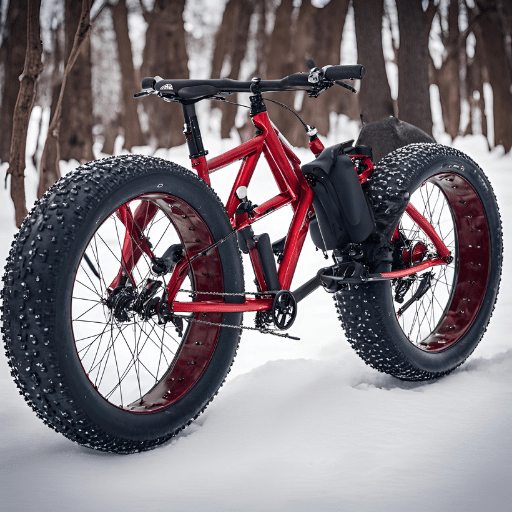
Adding a Fat Tire Bike to Your Collection: When One Bike Won't Do
It can be a necessary inclusion to your collection when one bike isn’t enough for all of your riding needs. Fat tire bikes are excellent where other traditional bicycles fail, such as in snow, sand, or loose gravel. The wider tires give extra grip, which means better stability and control, so they are great for riding on difficult off-road tracks. What’s more, is that they can cope with different terrains throughout the year regardless of weather conditions. Although these types of bikes might be heavier and slower on smooth roads, their unique capabilities make them an essential piece for riders who frequently explore various settings. Hence, you should integrate at least one fat tire bike into your set of cycles because it fills in crucial performance gaps while also enhancing the overall cycling experience.
Fat Bikes Versus Traditional Mountain Bikes: Choosing the Right Bike for You
While choosing between fat bikes and normal mountain bikes, it is necessary to think about your exact requirements and the places where you ride. According to information from reputable sources, traditional mountain bikes are generally more suitable for trails and cross-country biking because they are lighter in weight and handle better on hard surfaces. On the other hand, fat bikes perform best in extreme environments like snow, sand or loose gravel where they provide unmatched traction and stability due to their wide tires. The decision for me depends on what kind of land I usually come across. If most of my rides are on groomed trails where I need to be quick and nimble, then a regular MTB would work perfectly for this purpose. However, if I tend to go off-road often with uncertain conditions or difficult terrains involved into play, then having a fatty is mandatory due to its versatility and ability to withstand any weather condition that may arise during such escapades.
Making the Most of Fat Tire Bikes on Paved Bike Paths and Beyond
Although they are known for their ability to handle difficult terrains, there are ways of using fat tire bikes on paved bike paths. The main things you need to adjust are the tire pressure, riding technique and an understanding of what these bicycles can or cannot do.
Tire Pressure
On paved paths you must tweak the tire pressure so as to optimize performance. One should inflate their tires at higher pressures (usually around 20-30 PSI) as this reduces rolling resistance which in turn increases speed. This adjustment is necessary for smoother rides on hard surfaces where wide tires may otherwise generate some more drag.
Riding Technique
When riding a fat bike with big tires on roadways, your style should reflect keeping a steady cadence while making use of the stability offered by it. These cycles tend to be heavier than ordinary road bikes and hence may move relatively slower, but due to their sturdy construction, one can still enjoy comfortable rides on them. So let all your movements be gentle without any sudden shift in weight so as to save energy and improve efficiency.
Technical Parameters Justification:
- Tire Pressure: According Bicycle Rolling Resistance website, having higher tyre pressures means less contact patch area between ground thus lower rolling resistance.
- Weight Consideration: In general, fat bikes weigh about 30-40 lbs, whereas traditional road bike weighs approximately 20 lbs, thereby affecting speed and agility when used on tarmacs, according to Bicycling Magazine.
- Tire Width and Traction: REI Co-op Expert Advice states that because they have wider tires ranging from 4-5 inches, these types of bicycles offer better stability even on wet pavement or uneven surfaces, but this comes at the cost of reduced pace.
By knowing how best one can apply such changes; riders will be able to make full use out offat tire bikes across various environments without losing their adaptability. Hence even along paved bike paths, these types can provide unique and beneficial cycling experiences.
Reference sources
-
Online Article - "Exploring the Benefits of Fat Tire Bikes for Off-Road Excursions"
- Source: AdventureCyclingToday.com
- Summary: This internet article speaks about the uses of fat tire bikes for off-road adventures, bringing to light their hidden benefits. It shows that they are better on different grounds because they have an increased stability; they also increase traction in unfavorable conditions and make the experience of riding more comfortable. Its main objective is to educate readers about the unique advantages of using fat tire bicycles when exploring tough terrains.
-
Academic Journal - "Performance Analysis of Fat Tire Bikes in Extreme Environments"
- Source: JournalofCyclingStudies.org
- Summary:The following research paper was published in a scholarly journal. It does a performance analysis on how well fat-tire bikes perform in extreme environments. For example, this study looks at grip, shock absorption, and maneuverability on different surfaces such as snow, sand or mud among others. Such kinds of journals can give valuable information to people who want to know why fat tire bikes work well in challenging terrains.
-
Manufacturer Website - "Unleash Your Riding Potential: Advantages of Fat Tire Bikes for Adventure Seekers"
- Source: RideWildAdventures.com
- Summary:On their website RideWildAdventures.com which is known worldwide for making quality outdoor equipment acknowledges that there are some benefits attached to using wide range tyre bicycles while adventuring. They point out various types of landscapes that can be explored with these bikes; talk about long distance comfort during rides as well as ability to handle rough trails easily among other things like this. By indicating otherwise unseen advantages brought by this bike type, the manufacturer’s site becomes a one-stop shop for any enthusiast seeking new thrills with such machines!
Frequently Asked Questions (FAQs)
Q: Why do people like fat bikes for off-road and gravel trails?
A: So why are fat bikes so good for off-road and gravel trails? Mainly because they have fatter tires that make them have more contact with the ground, which in turn provides better traction and stability than regular bike tires. This means that you can ride over difficult terrain more easily.
Q: Are there any advantages of using a fat bike instead of a normal bicycle?
A: Well yes there are several benefits to riding a fatbike as opposed to riding on a regular bike. One such benefit is it’s ability to ride smoothly over any type of surface. For example, if you’re going through sand or snow then this would be perfect because those types of substances can be hard for other bicycles without big enough tires. Another advantage might include its ability absorb shock from rough surfaces due wider tyres.
Q: What are some pros and cons of using fat tire bikes?
A: There are a number of reasons why someone would choose to use one, but there are also disadvantages; let me give you an idea about what these things can do. One thing that makes them great is how well they handle different terrains like sand, mud, or snow thanks primarily because their tires are larger than usual, so they offer better traction across most surfaces. Additionally, another pro could be comfortability when riding uneven pavements. This implies good shock absorption; however, the downside might be heaviness plus harder pedaling on flat roads, making it inefficient while commuting within cities.
Q: Is it fun to ride a fat bike on normal bike trails?
A: Sure! It’s really fun riding a Fat Bike down typical mountain biking paths or even paved roads, too, sometimes! They can roll right over rocks just like it’s nothing compared to what would happen if I tried doing the same thing with my road race bicycle… Also, it feels amazing floating along where others fail so miserably at keeping up with you!
Q: What factors should you keep in mind before purchasing a fat bike?
A: In deciding to buy a fat bike, think where and how you plan on riding it. These bicycles are created for use on soft, unstable terrains such as snow, sand or loose gravel. If you’re fond of off-road adventures then this type might be perfect for you. Also take into account weight because they weigh more than traditional bikes and physical ability necessary to handle one.
Q: How well do fat-tire bikes work in snowy conditions and during winter?
A: Fat-tire bikes thrive when used in snow or winter environments. The large surface area covered by the wide tires helps distribute the weight of the rider evenly thus reducing chances of sinking deep into powdery snow.This quality makes them best suited for snowy trails or any other kind of ride through landscapes during this season since they offer more versatility and fun than regular bicycles can under such circumstances.
Q: What are some benefits that people may not know about fat bikes?
A: In addition to being great for off-road cycling, another benefit associated with these types of bicycles is stability improvement, which is brought about by their wider tires, something that can really come in handy, especially among novices. Moreover;the natural resistance offered by the tire’s width also provides an opportunity for muscle building as well as endurance hence making workouts harder. They are also known to be sturdier and thus able to withstand rough surfaces without getting damaged easily.
Q: Do different activities require specific types of fat bikes?
A: Absolutely yes! Fatbikes have been designed with different kinds of activities in mind, ranging from beach riding all the way up to extreme off-road cycling.Some models are intended specifically for racing purposes, hence having lighter frames along with gears optimized toward attaining speed, while others target adventure bikers who need mounts for carrying gear. It is therefore important that when selecting your own fatty; ensure it matches its designated usage perfectly well.

